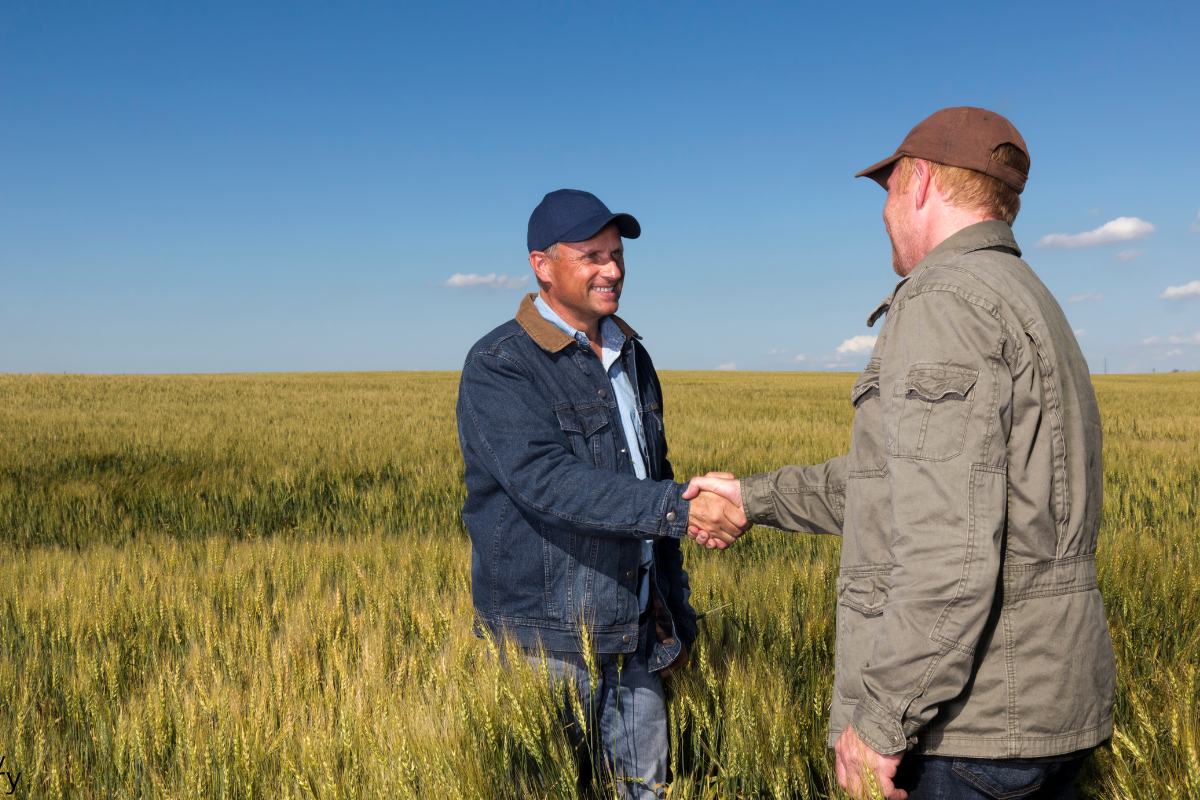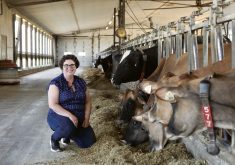In the early days of COVID-19, the staff at Farm and Good Care Ontario thought their website had been hacked. Overnight, the hits on their virtual farm tours were up 4,000 per cent.
Then, they learned why. “It turns out the Toronto District School Board promoted our website,” says Kelly Daynard, the group’s executive director.
“Teachers were trying to figure out how to teach online; parents were trying to look for stuff to show their kids, and our technology was in place to help both achieve that.”
Read Also

Are you ready for farm succession?
What motivates some farmers to make a succession plan while others don’t seem worried.
It’s why the word “power” has taken on such a new meaning.
Today, trending hashtags generate huge energy, both positive and negative. Battles over “fake news” flame constantly. Arguments break out over myth versus fact. And social media keeps growing.
Is our industry keeping up? Do we even know who the consumer is in this fast-paced, dynamic world?
Farming is an industry based on tradition and family business. Farmers work hard and feel they should be portrayed that way, and that they should be recognized for their “salt-of-the-earth” values.
But does this mean they shouldn’t also showcase themselves as professionals?
[RELATED] Be your own futurist
In fact, that may be the biggest question of all. How do innovative, technologically adept farmers build consumer trust in the “new farmer” they are becoming?
Country Guide spoke with Christina Crowley-Arklie, founder of Crowley + Arklie Strategy and Co., about the future of communications in agriculture and food. Crowley-Arklie grew up on a dairy farm in central Ontario and previously worked for Ontario’s Minister of Agriculture, Food, and Rural Affairs as press secretary and senior communications advisor.
“Agriculture and food must go through a rebrand,” Crowley-Arklie says. Farming needs to update the image of farmers and how they tell their stories, she says. “We need to bring attractiveness — a sexiness if you will — to our sector to attract the right stories in media, attract more talent to work for our sector, and to showcase our leadership, innovation and essentialism.”
It’s a challenge, Crowley-Arklie says. But, she adds, “The opportunities are also very exciting at a time like this.”
Part of the answer has to do with efficiency. How do farmers reach the modern consumer so agriculture’s messages will actually penetrate?
Crowley-Arklie says it all needs to start with meeting consumers on their food journey when they are thinking of the farm, often without even knowing it. “We need to get in the minds of our consumers and think about when they’re most often thinking about food, how they’re consuming information on it, and what questions they’re asking,” says Crowley-Arklie. “As a mother myself, and the end-consumer who consumes information and stories about agriculture and food on social media, through TV and digital means online, it could be in the morning when I am packing a lunch. Or right before lunch when I am thinking ‘Do I eat my healthy salad, or do I go to McDonald’s for that chicken snack wrap?’ Or it is at nighttime when meal prepping, or when you are grocery shopping with the kids on the weekend. These are the times when consumers are asking about food.”
[RELATED] Pivot, and then pivot some more
When we choose where in their daily schedules we are going to have our conversations with consumers, then we are able to target our communications to them. What does the parent want to know when they are packing their children’s lunch? Well, they want to be sure the food they bought for the children is healthy, safe and nutritious. And they also want to know that it contributes to a healthy world for their children to grow up in, so the parents are ready to hear about eating locally and supporting local producers.
That means messages about food quality and farm sustainability will get listened to. But, there’s another “but.”
“Chances are that consumers are sourcing information from a food personality, influencer or friend online,” says Crowley-Arklie. “They see a video on social media platforms like Instagram or TikTok about a food-related topic that wasn’t maybe top of mind for them and they then begin to ask questions.”
[RELATED] Farmtario: You are what you eat
Compared to the ’80s and ’90s, when television was the dominant force, and when events were such a big deal, it’s a different world. It’s why there’s a shift in how agricultural organizations are communicating and reaching customers by trying to bring the food experience to life with campaigns like “The Pig Mobile” from Ontario Pork and campaigns targeted specifically at what Canadian consumers are looking for, such as Dairy Farmer’s of Canada’s Net Zero 2050 goal campaign just recently launched.
Farm organizations themselves are also turning to social media and virtual reality. Farm and Food Care Ontario is one organization that offers virtual reality and 360-degree videos. Their innovation goes back to 2006 when they began filming virtual farms and posting online to expand into the virtual reality of today.
“Now it is all about a 360-degree experience,” says the association’s Daynard. “We wanted people to feel what it’s like to be on the farm and now with VR (virtual reality goggles), they can literally immerse themselves and walk around the barn, have sheep walk by you. It brings the farm experience as close as possible for those not on the farm.”
And, as noted above, it also created that opportunity for Toronto’s school children.
Then there are also the social media trailblazers across Canada — those who have amassed massive followings by bringing social media to life for consumers. Sandi Brock, a sheep farmer from Ontario for example, has amassed millions of views on her YouTube channel by creating both entertaining and educational videos about her daily adventures with her sheep. That is a trend worth watching, Crowley-Arklie says: “A targeted approach with personal storytelling from the farm to meet our consumers on social media is growing.”
To support this way of advancing communication directly between farmer and consumer, organizations like Farm and Food Care Ontario, along with its sister organization, Farm and Food Care Saskatchewan, provide training called “Speak Up” to farmers to help share the story of agriculture.
“Ten times out of 10 we want the farmer to be the voice and share their own story,” Daynard says.
This, though, takes us back to the question of how the average producer can begin to take ownership of their communications and play a role in strengthening the trust between consumers and our food system.
Some advice from Crowley-Arklie? Avoid the word “education.”
“When someone says they want to help educate you, it makes you feel unsure whether you want to trust that person,” she says.
And agriculture must do more, including encouraging consumers to develop a bigger picture of the Canadian food system — not just from the farmer to the consumer, but providing perspectives from along the value chain of farmers, processors, distributors, retailers and consumers.
It’s also essential that farmers explore whether “food system” is a concept that Canadian consumers will relate to, especially in connection with the stories they will trust.
The point is, consumers trust people. And they may even trust a system, as long as they trust the people in it.
Says Crowley-Arkley, “We need to leverage these people and their incredible stories.”















